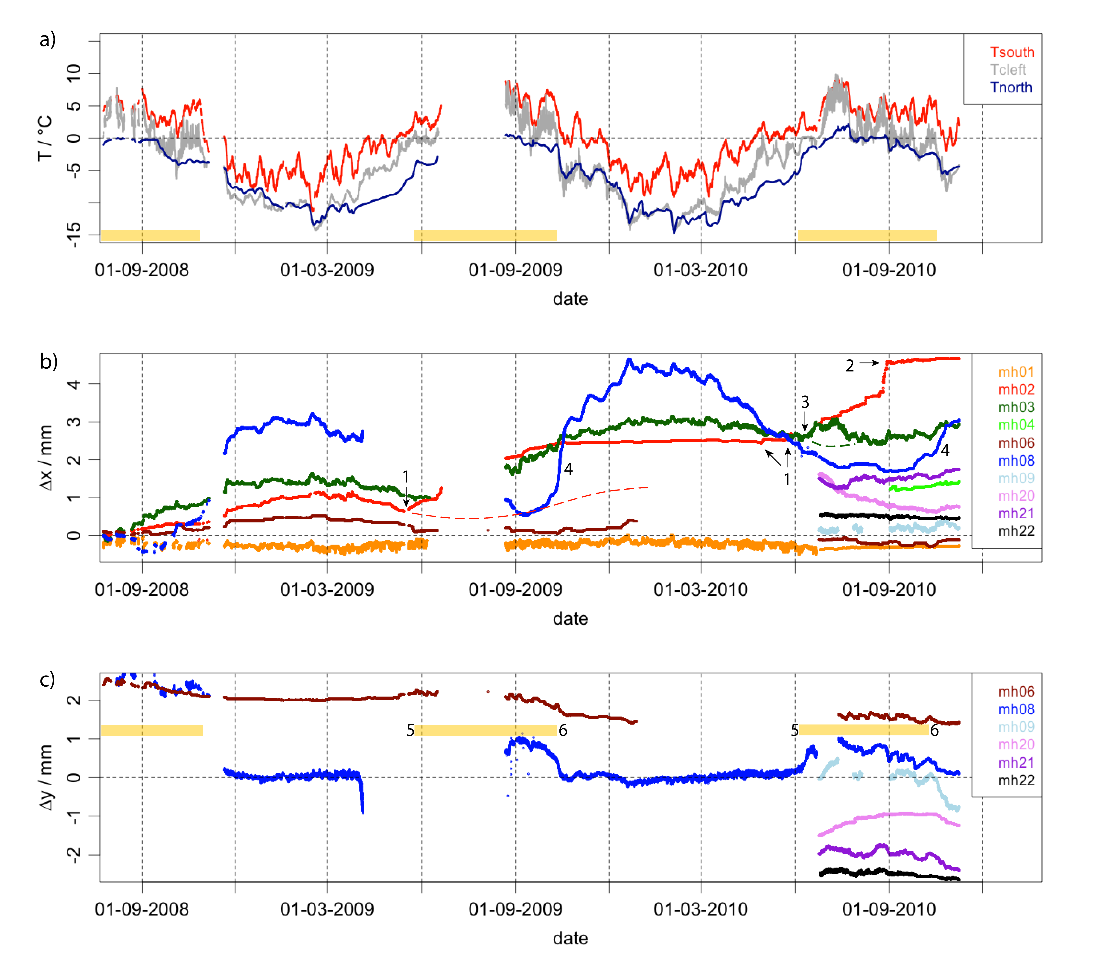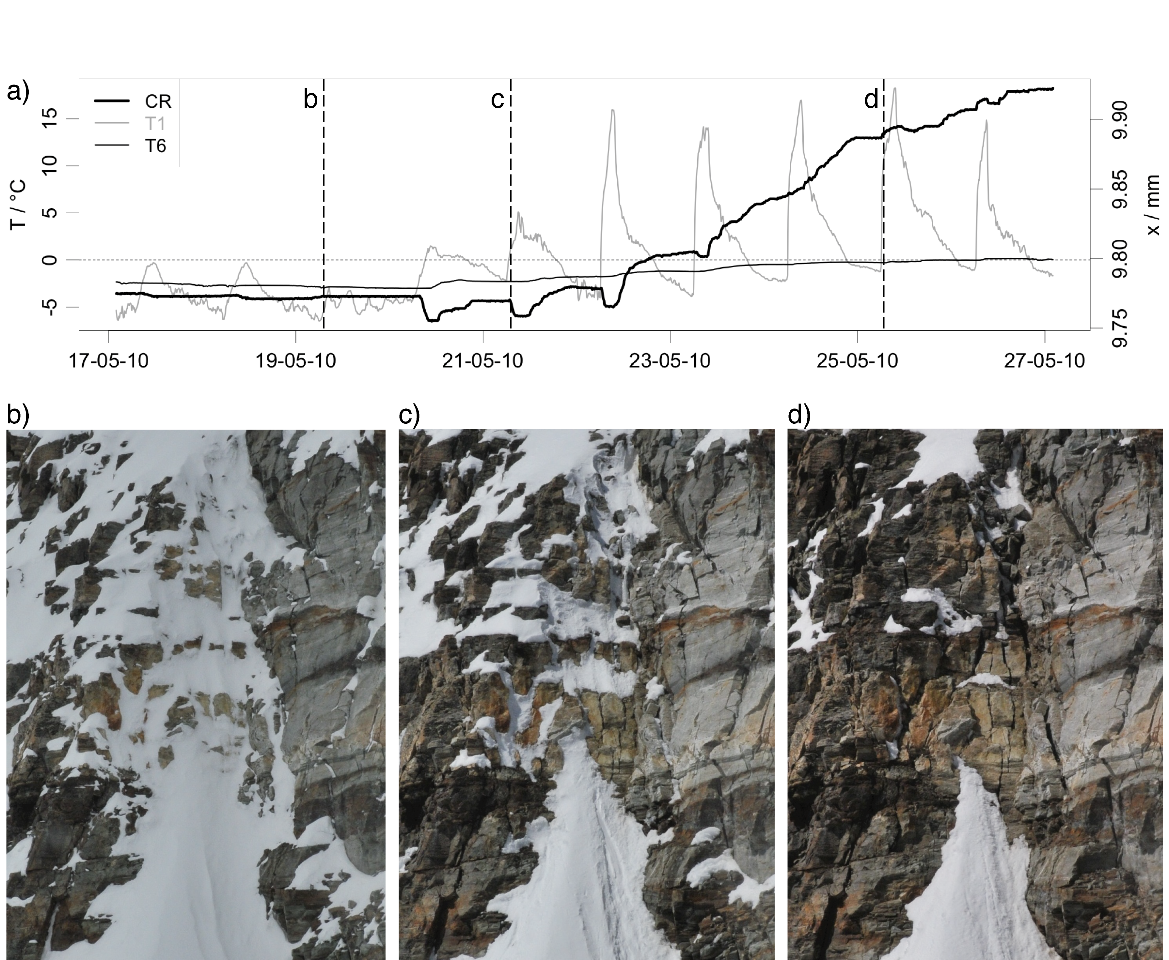Navigation auf uzh.ch
Navigation auf uzh.ch
The mechanisms that control climate-dependent rock fall activity from permafrost mountain slopes are currently poorly understood. The results from the rock slope monitoring at Matterhorn Hoernligrat are the following: A negative dependency of cleft expansion on temperature prevails at all observed clefts for most of the year. It is interrupted at most clefts by a period with enhanced opening and shearing in summer, which lasts from sustained melt to initial refreeze within the respective cleft.

Two distinct process regimes may cause these temporal patterns. Based on current theories and laboratory evidences on rock slope stability we hypothesize that:
The combination of these hypotheses points to an understanding of their interaction in the field: The thermo-mechanical and cryogenic processes slowly modify geometric settings and cleft characteristics of permafrost rock slopes on the long-term, while thaw-related processes immediately act on stability. Such short-term stability minima would activate rock masses subject to the slow changes. According to our measurements, response to the surface thermal conditions of the creeping motion related to this weakening is within hours to weeks, depending on the type of heat transport.
